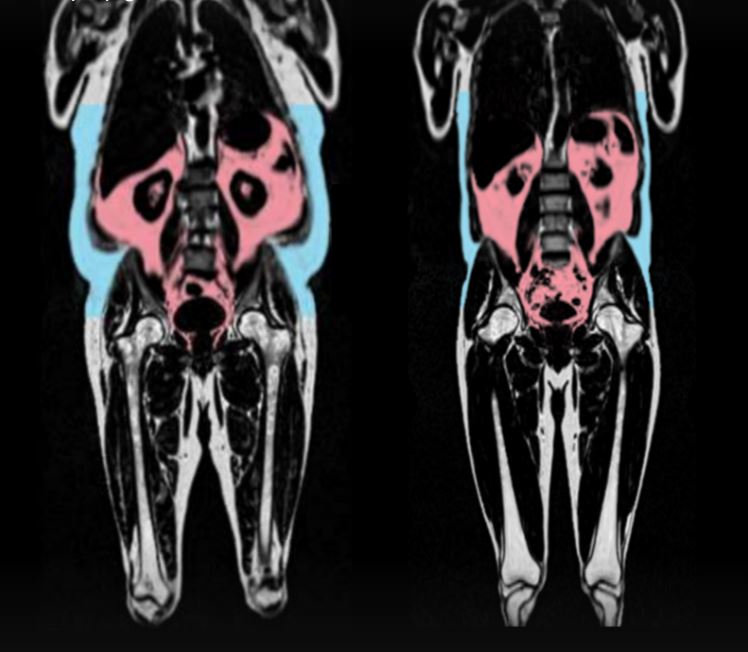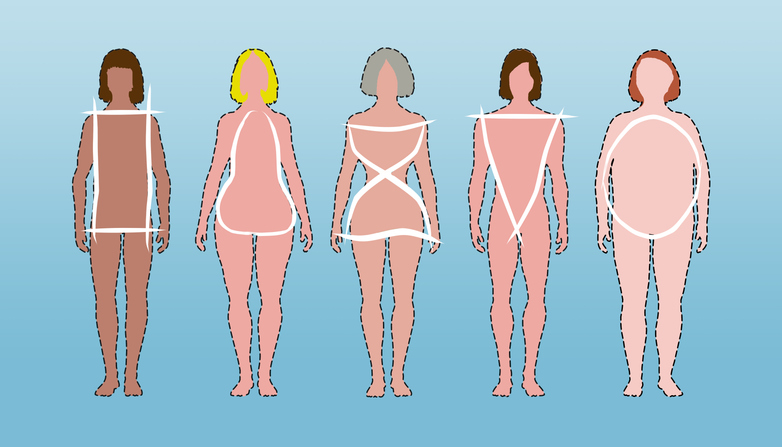HAVING a beer belly can age your heart faster, a study suggests.
Visceral fat that’s hidden deep in the body and surrounds the stomach, intestines and liver can drive up inflammation and accelerate ageing of the heart and blood vessels, according to UK scientists.
People who are outwardly fit and maintain a healthy weight may be at risk too, as they can also have excess fat wrapped around their organs.
But body fat around the hips and thighs – often referred to as ‘pear shaped’ on women – could protect against heart ageing.
Knowing where fat is stored in the body is more important than someone’s total body weight when it comes to predicting heart age, researchers suggest.
Previous research shows that having an older heart age can up the risk of heart attack, stroke or heart failure, and other types of heart disease.
For the new study – led by the Medical Research Council (MRC) Laboratory of Medical Sciences in London – experts looked at UK Biobank data from 21,241 people.
This included whole body imaging that mapped fat and where it was located in the body.
Scientists then used artificial intelligence to analyse the images and detect signs of organ ageing, which includes stiff and inflamed tissue.
Each person was given a heart age, which was compared to their actual age at the time of the scan.
Researchers found hearts aged faster in people with more visceral fat.
Meanwhile, ageing between male and female body types also differed.
Those who were apple-shaped – with more fat around the stomach – was linked to early heart ageing in men.
However, fat on the hips and thighs – often known as pear shaped – was found to protect against heart ageing in women.
This protective effect was also observed in pre-menopausal women, which researchers linked to higher levels of oestrogen, the hormone primarily produced by the ovaries.
Professor Declan O’Regan, who led the research at the MRC Laboratory of Medical Sciences and Imperial College London, and is the British Heart Foundation (BHF) professor of cardiovascular AI, said: “We have known about the apple and pear distinction in body fat, but it hasn’t been clear how it leads to poor health outcomes.
“Our research shows that ‘bad’ fat, hidden deep around the organs, accelerates ageing of the heart.
“But some types of fat could protect against ageing – specifically fat around the hips and thighs in women.”
Prof O’Regan suggested body mass index (BMI) may not be a good way of predicting heart age, and that knowing where fat is stored in the body, rather than total body weight, is important.
He also said the team is planning to explore the impact of weight loss jabs on visceral fat.
Can you target fat loss to one area?
We all have those wobbly bits we’d like to change more than others.
Targeted fat loss, often referred to as “spot reduction,” is the idea that you can lose fat from a specific part of your body by focusing exercise to that area.
However, the scientific consensus is that spot reduction is largely a myth.
When you lose fat, it tends to come off in a genearl manner, spread over the body.
It is determined by genetics and hormonal factors rather than specific exercises.
However, you can focus exercise on a certain muscle which can help it to tone and grow.
This can contribute to a different look of that area, especially if you are lean (meaning there is not much fat there).
To lose fat:
- Reduce the calories you eat
- Have a balanced diet, making sure to eat lots of fruits and vegetables. These contain fibre which help you feel more full
- Do regular exercise more than you were before. This could be walking, gym classes or weights
- Stick to something long term. If your plan is too drastic, you’re more likely to give up
“The goal of our research is to find ways to increase healthy lifespan,” Prof O’Regan added.
“While being active is important, we found that hidden fat could still be harmful even in fit people.
“In the future we plan to investigate how drug therapies, such as GLP-1 inhibitors could improve not just diabetes and obesity, but target the ageing effects of hidden visceral fat.”
Prof Bryan Williams, chief scientific and medical officer at the BHF, which helped fund the study along, said: “We already know excess visceral fat around the heart and liver can lead to increased blood pressure and high cholesterol, so it is concerning that it could also help to speed up ageing of the heart and blood vessels.
“As the pattern of fat distribution typically seen in women’s bodies is linked to oestrogen, that hormone may be key to future therapies developed to tackle heart ageing.
“Eating a healthier diet and becoming more active can help to reduce visceral fat levels.”
How to reduce your risk of heart attacks and stroke
You can reduce your risk of heart attack and stroke with many of the same methods.
Heart attacks and strokes, although affecting different organs of the body, are both what we call cardiovascular events.
Both arise from similar underlying conditions, such as atherosclerosis —a buildup of fatty deposits in the arteries.
According to the American Heart Association, the risk factors for heart attacks and strokes are largely the same: high blood pressure, high cholesterol, smoking, obesity, physical inactivity and diabetes.
Therefore, addressing these risk factors can simultaneously reduce the risk of both conditions.
Here are ways you can prevent the two:
Healthy diet
- More fruit and veg: The DASH, which emphasises fruit, vegetables, whole grains and lean proteins, has been shown to reduce blood pressure and improve heart health.
- Less fats: Too much saturated and trans fats can raise cholesterol levels and increase the risk of atherosclerosis. Go for healthier fats like those found in olive oil, nuts, and avocados.
- Limit salt: High salt intake is linked to high blood pressure, a major risk factor for both heart attack and stroke. The NHS recommends no more than 6g of salt per day for adults.
- Fibre: Foods high in soluble fibre, such as oats and beans, can help lower cholesterol levels.
Exercise
Walking, running, cycling, swimming – whatever you like, do it!
Aerobic exercise can strengthen the heart and improve circulation.
The NHS advises at least 150 minutes of moderate-intensity aerobic activity or 75 minutes of vigorous-intensity activity each week.
Strength training exercises can help control weight, improve cholesterol levels, and reduce blood pressure. It is recommended twice a week by the NHS.
Manage blood pressure
Healthy diet and exercise can help keep your blood pressure in check.
But it is worth monitoring it yourself after the age of 40, at least, when the NHS invites adults for a check-up every five years.
High blood pressure often has no symptoms but significantly increases the risk of heart attack and stroke.
Quit smoking
One of the best ways to quit smoking is to use resources provided by NHS Smokefree. Support groups, medications, and other tools to help quit smoking such as vapes could be what you need to kick the habit for good – and it’s free.
Limit booze
Excessive alcohol consumption can increase blood pressure and contribute to weight gain, which can snowball and become a heart health risk.
The NHS recommends not regularly drinking more than 14 units of alcohol per week.














